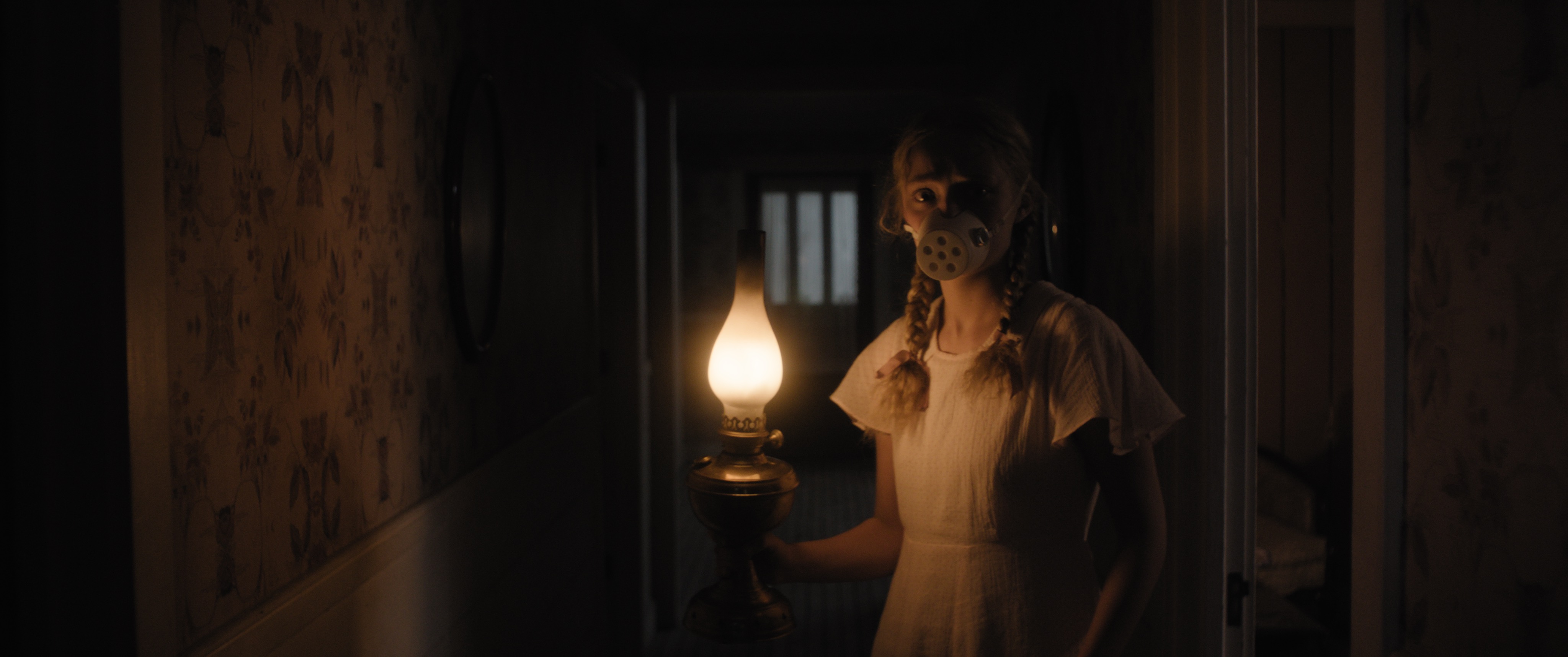
The setting is 1930s Oklahoma, and Margaret (Sarah Paulson) is gasping for air. She’s just awoken from a dream of lush fields of wheat, of her daughters’ laughter, and then, suddenly, an endless cloud of gray dust. It’s a hard cut from easy breathing to choking. Hold Your Breath, the movie she’s at the heart of, feels much the same.
It’s Dust Bowl times, and Margaret and her two daughters are left at the mercy of massive dust storms and a seemingly endless drought, with the green fields that lured them to Oklahoma a distant fantasy. Though times are tough, Margaret ekes out a respectable way of life: sweeping and dusting, tending to the lone cow left on the farm, helping others in her community, dusting more. But as she tends house, she starts to worry that something more malevolent is threatening her family — and she might have to go to extreme lengths to keep them safe.
Hold Your Breath’s promise is tantalizing: Dust Bowl horror! When the air itself clogs people’s lungs, and the cracked, dry land stretches out forever in front of them. The thought that someone (or something) is menacing what little is left makes the situation all the more delicious (at least from an audience perspective).
There’s a clear COVID parallel here: For anyone who remembers the feeling of powerless confusion about what air was “clean” and what might cause the worst cough you’ve ever heard in your life, Hold Your Breath’s portrait of a woman on the edge should feel more powerful than it ultimately does. Instead, the narrative gets choked by all the things crammed in as it goes along. There’s the Grey Man legend, the haunted tale that spooks the whole family, about a man who turns into dust and makes you do bad things once you breathe him in. There are the men of the community, far away at work building a bridge (to the future, one presumes), leaving the women to tend what home they have left. There’s Margaret’s already fragile mental state following the death of one daughter, and the constant threat of losing another to the poisonous air. Her sewing circle is sharing gruesome rumors of a violent drifter, while Margaret’s close friend appears to be losing her mind amid all the dust and tragedy.

This is a lot to contend with, but as a list, it sounds like a group of things that could potentially feel in concert with each other. The failure of the land, the society, the family unit, and even the very walls of Margaret’s house that can’t keep the dust out — it’s all connected, and each one frays Margaret a little more. And yet Hold Your Breath feels just as stuck as Margaret: Both of them have too much going on. As various aspects of her life fall apart, the movie moves forward stockily, picking away at her comfort in relatively isolated blocks. By the time all the storylines converge, the narrative feels too messy to make sense. It’s hard to care whether the worst threat to this farm is a supernatural vagabond or a mental break; none of the storylines can breathe well enough to hit all that hard.
Once the dust settles, Hold Your Breath offers little more than another trauma as metaphor, reducing the promise of its horror to a more pat movie. It’s a real shame, because beneath all that grime, there’s still a glimmer of a more profound unraveling if the story was focused more precisely. The glimpses we get of Margaret’s mental anguish make for some chilling individual scenes — of Margaret trying to muster normalcy in front of her fellow townsfolk, or covering her windows during the day so “it’s so much easier to breathe.” But all the anguish can’t actually communicate the terror the story deserves. Instead, Hold Your Breath chokes on its own airlessness, and is left barren in the process.
Hold Your Breath is now streaming on Hulu.
